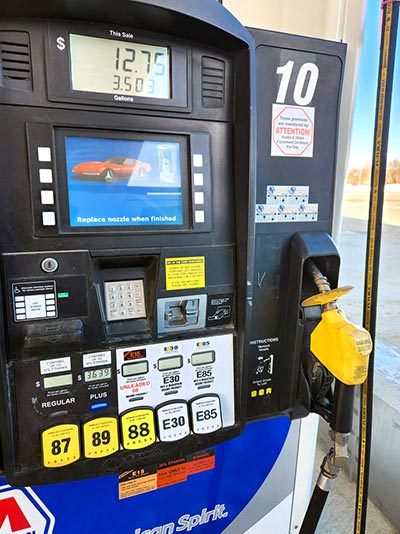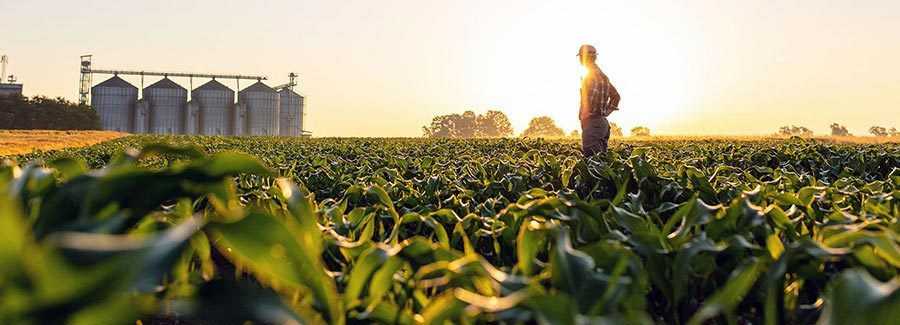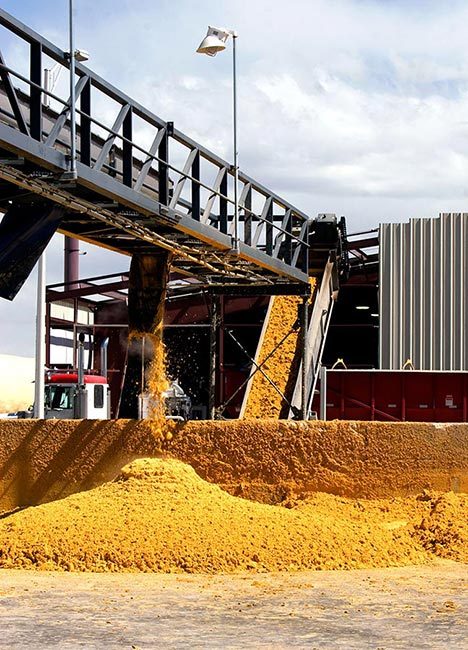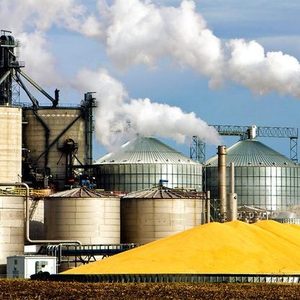After a Good Year





April 12, 2023
BY Katie Schroeder
Ethanol producers are coming off an undeniably strong year. 2022 was not devoid of challenges, but it was replete with landmark policy and marketplace dynamics that, on balance, allowed the vast majority of U.S. ethanol producers to do quite well financially. Mirroring that financial success this year would be like a pro baseball pitcher throwing back-to-back perfect games—it doesn’t happen—and, sure enough, the last quarter of 2022 and the first quarter of 2023 already reflect that. But this year’s margins may not disappoint, with at least some of last year’s margin-making factors still in play.
Dave Zimmerman, CEO of Big River Resources LLC, tells Ethanol Producer Magazine those 2022 factors included the RVP waiver for E15 last summer; high prices—not only for gas, but for ethanol, distillers grains and distillers corn oil (DCO); ethanol producers receiving Covid relief funding; and the passage of the Inflation Reduction Act, with its funding for biofuels infrastructure and more. There were also impediments to profit in 2022, including high natural gas prices, rail delays coupled with the months-long threat of a rail strike, and regional corn supply shortages. But none of it was enough to drag healthy ethanol plants out of far-positive territory. “I mean, 2022 was a phenomenal year for most ethanol producers,” says Zimmerman, who oversees Big River Resources’ four ethanol plants, including two plants in Iowa, one in Wisconsin and another in Illinois, which collectively produce more than 430 MMgy.
Despite ethanol prices decreasing 7.5 percent in the last three months of 2022, as compared to the same time period in 2021, according to an investor update released by Southwest Iowa Renewable Energy, many ethanol producers reported higher net gains compared to 2021. The report also highlights that distillers grains prices were up 30 percent because of a supply shortage in the Midwest due to operational challenges caused by unusually cold temperatures.
Connie Lindstrom, senior biofuels analyst with Christianson Benchmarking LLC, explains that in 2022 the margins were overall fairly good, despite high natural gas and corn prices, since the high energy prices also boosted the price of ethanol, DCO and distillers grains. Christianson has been collecting data on the ethanol industry since 2003, gathering information on producers’ operational and financial statistics. Lindstrom explains that the average grind margin in 2022 was about 42 cents per gallon of ethanol.
“The price of ethanol has risen, and that’s helpful to the bottom line. And then the price of distillers grains products has gone up corresponding to the price of corn,” she says. “Fortunately, the price of ethanol has been high enough to compensate for those high corn costs and natural gas costs. So, still quite profitable for the plants overall.”
Looking Back
The fourth quarter report from CoBank’s Knowledge Exchange explains that average ethanol production margins (grind margins minus operating expenses) reached pre-Covid levels, with margins averaging around 27 cents in the fourth quarter, compared to 25 cents for the first nine months of the year. Kenneth Scott Zuckerberg, industry analyst for grain, farm supply and biofuels, explains that these numbers are in line with the 15-to-20-year average for ethanol profits, which is between 25 and 30 cents per gallon.
Zimmerman, Zuckerberg and Lindstrom outline some of the key market drivers in 2022, as well as the input costs that influenced producer margins. “[CoBank] pay[s] a lot of attention to natural gas and corn prices,” Zuckerberg says. “Corn being a feedstock for ethanol, and of course natural gas used as an energy source in the production of fermented alcohol at the ethanol plants.” Natural gas prices in 2022 reached 20 cents (per gallon of ethanol) on average, the highest on record since 2008, when the price of natural gas per gallon of ethanol was 28 cents on average, and a price increase of roughly eight cents compared to 2021 prices, Lindstrom explains. However, the range between the bottom quartile and the top quartile was 10 cents, meaning producers in the bottom quartile were paying 14 cents, while those in the top quartile were paying as much as 25 cents. Lindstrom says that the producers who were able to keep their costs lower utilized a variety of methods, including selling wet distillers grains to local feed markets instead of using extra natural gas to dry the coproduct, locking in the price with their natural gas provider last year or using CHP or other alternative energy sources such as wind energy.
According to Zimmerman, natural gas wasn’t the only extra expense producers faced last year. “Our input costs, our fixed and our variable costs went up pretty dramatically, mostly in 2021 and 2022 when we were at more or less peak inflation,” he says. “Whether it be labor costs or natural gas costs or enzyme costs, they all took a pretty steep increase over the last 18 months. My expectation and hope is that those moderate through 2023.”
Good news for the ethanol market in 2022 included the increased usage of high ethanol blends like E15 and E85 across the nation, particularly during the summer months, when gas prices skyrocketed. The Renewable Fuels Association, in an analysis of data from the Minnesota Department of Commerce, determined that E15 sales—in that state alone—reached 171 million gallons, a 31 percent increase over 2021 volumes. E85 use in California remained near record levels, too.
Corn prices in 2022 were high due to weather events throughout the Midwest. Prices have reached up to $6.75 per bushel, which has cooled the export markets somewhat and triggered demand rationing.
Zimmerman explains that corn and ethanol prices tend to correlate, giving producers great margins in spite of a higher price for feedstocks. An inflation environment tends to produce the best returns for most businesses, and ethanol is no exception, he explains. “That’s a common misconception. A lot of folks will think that if corn is $6.50, then we probably aren’t making much money, but that’s not really true,” he says. “Overall, I would say I’m not viewing 2023 as favorably as what we saw in 2022 ... simply due to the deflation of the bubble that’s going on right now, driven mainly by the higher interest rates.”
Moving Forward
So far, 2023 has not been as profitable as 2022, according to Zimmerman. “Coming into 2023, the first quarter of every year is notoriously heavy, meaning that we tend to overproduce in the first quarter each year; [gasoline] demand is generally pretty low in the first quarter [when] you’re talking weather,” he says. “As we sit here today, versus 2022, our margins are greatly reduced from where we were in 2022.”
Although corn prices are difficult to predict, Zimmerman is hoping for a good crop based off of weather modeling that predicts an El Niño coming in June and July, since crops in El Niño years usually produce above trendline.
The outlook for the ethanol market looks to be in a stable position, on average, through the rest of 2023, according to Zuckerberg. “That being said, there is certainly the risk of upside and downside volatility on both sides, but we’re pretty much ... in a neutral position, but with a possibility of an upward bias,” Zuckerberg says.
For Zimmerman, the presence of an RVP waiver this summer is a key factor to determining this year’s market outlook. Although several governors throughout the Midwest submitted appeals to opt out of the RVP requirement, which would allow E15 to be sold year-round in those states. “I think an important thing that we can continue to do is continue to lobby and strive for increased ethanol usage within the gasoline pool, and we’re doing that,” Zimmerman says. “There are a lot of political things at play here that tend to effect the overall demand for ethanol as we go throughout the year.”
He explains that it is key that the waiver is in place before May 1, when the RVP limits are put in place. Zimmerman emphasized the importance of implementing an RVP waiver for the summer driving season. “If you look at these eight states, 15 percent of the entire gasoline sales occur in these states, in that Midwestern region,” he says. “You look at it in terms of E15 sales; if you throw those states and a few other fringe areas that are also selling E15, it accounts for about 60 percent of the E15 sales. But having that waiver this summer is very, very important.”
In March, the EPA gave a belated response to the governor’s request, granting an RVP waiver for the states beginning in June of 2024. Prior to this announcement, the Energy Information Association estimated that the U.S. ethanol industry would produce 990,000 barrels of ethanol per day in 2023. In March, that estimate shifted upwards to 1 million barrels per day following the EPA’s response to the eight Midwest governors. As of early March, the states of Iowa and Nebraska announced that they plan to pursue legal action against the EPA if the implementation date is not moved to summer 2023.
From the feedstock perspective, the USDA increased its corn price estimates to $6.70 per bushel in February, and decreased its projection for how much corn would be used in ethanol production in 2023 by 25 million bushels, from 5.275 billion bushels to 5.25 billion bushels.
Zuckerberg explains that he has some policy concerns moving forward related to the implementation of the Inflation Reduction Act and the impact of e-RINs generated by electric vehicles charged using biogas-based electricity, and how obligated parties could buy those credits without supporting the ethanol industry. “It’s not clear what the final rule is going to look like and then, you know, you’re clearly bringing the e-RIN into this while you’re trying to satisfy the ethanol industry,” he explains. “And this administration has a tendency to try to create a series of rules that make everyone happy, and if rules make everyone happy, then there’s something more to it, it’s not what it seems. That’s part of our concern.”
Zimmerman believes 2023 is a transitional year. “Many of us are looking to lower our carbon scores right now, and the new paradigm that we expect to see in the coming years is really going to be focused on reducing carbon,” he says. “And you’ve seen a lot of uses that are out there that have strong potential for the ethanol industry, and I think as we transition toward some of those new uses, whether that be SAF or renewable diesel, I think we’re going to see a slow change in the drivers of our overall revenue.”
Author: Katie Schroeder
Contact: katie.schroeder@bbiinternational.com
PRINTED IN 2023 MAY EPM
Advertisement
Advertisement
Advertisement
Advertisement
Related Stories
Iowa farmers have a new market opportunity for their 2025 soybean crop. Landus is expanding its Clean Fuel Regulation initiative, made possible by recent policy changes expected to increase Canada's demand for liquid biofuel.
Topsoe, a leading global provider of advanced technology and solutions for the energy transition, has been selected as the renewable diesel technology partner for CountryMark’s Mount Vernon, Indiana refinery.
Klobuchar, Moran introduce bipartisan legislation to support biorefineries, renewable chemicals, and biomanufacturing
Sens. Amy Klobuchar, D-Minn., and Jerry Moran, R-Kan., on July 31 announced the introduction of the Ag BIO Act. The legislation aims to update the USDA’s loan guarantee program to better support biorefining projects.
The U.S. exported 35,953.6 metric tons biodiesel and biodiesel blends of B30 or greater, according to data released by the USDA Foreign Agricultural Service on Aug. 5. Biodiesel imports were at 2,148.9 metric tons for the month.
XCF Global leverages Alfa Laval technology to enhance pretreatment capabilities at New Rise Reno facility
XCF Global Inc. on Aug. 5announced it leverages Alfa Laval Inc. pretreatment technology at its New Rise Reno biorefinery, a sustainable aviation fuel (SAF) plant located in Nevada. The pretreatment technology enhances feedstock flexibility at the plant.
Upcoming Events










